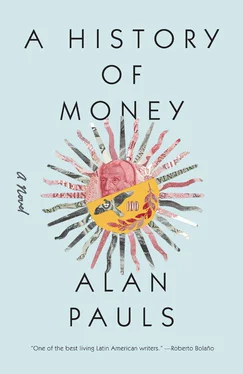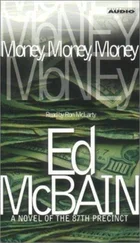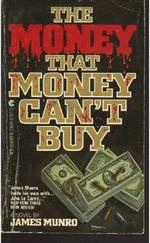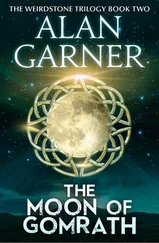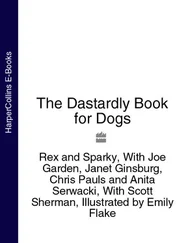There’s money inside, a few creased notes. He holds it up to his eyes with a look of surprise and suspicion, the same look people use with worrying gifts whose wrapping gives away but also contradicts their contents, the sumptuous packaging evidently having been the object of great care even though the contents are so worthless that it’s difficult to even think of them as a gift, or the other way around, the wrapping an emergency measure, improvised using cheap materials, and the contents an incalculable joy. But a gift? He’s not even sure that it’s intended for anyone, and not simply a method of safekeeping. He pulls the closet doors wide open and lets in the light from the room, and after squatting and scanning the two rows of shoes, he finds another packet hidden in a pair of loafers, and another squashed under the sole of a sandal, and yet another being badly crushed by a pair of knee-high boots.
They’re all small amounts, petty cash, and always different and very specific quantities that seem to correspond to some immediate need: twenty-five pesos, forty, thirty-two, two hundred and twenty, a hundred and ten. It’s not saved cash. It’s unspent cash: cash that was originally meant to pay for something, or settle something, but was stopped at the last minute and kept here, in this hothouse his mother confined it to, where she’s been leading this sterile life for how long now? How long has his mother been collecting money? Those hundred and twelve pesos, for example. That’s the exact amount on the electricity bill he picked up off the floor as soon as he came into the apartment, the one that prompted his mother’s last request for money. It’s that cash. Not just the same amount but the same notes he gave her: two fifties, a ten, and a two. On one of the fifties he recognizes the text from a superstitious chain his mother read aloud through laughter when she received it. He presses farther into the closet, possessed by a strange fury and willing to scour it to the last square centimeter. He finds more money, nests of it scattered between sweaters, in a drawer full of bras, hidden among socks and on the T-shirt shelf, where they’re sprouting like mothball mines or Easter surprises. It’s always his money: everything he’s ever lent her, everything he’s given her to spend, pay, cover, save herself from the emergencies she was drowning in. They turn up in the drawers of her nightstand, among earplugs and broken pairs of glasses; in the medicine cabinet in the bathroom, cuddling up to bottles of painkillers; in the kitchen, in the cutlery drawer and the pantry and even the oven — two little silver packets gleaming in the darkness, sitting in the middle of a baking tin like precocious stars in a black-light theater — and when he begins to open these little packets, he discovers that the money goes back in time, regresses, getting younger and older at the same time. There are notes and coins here from five, ten, twenty, forty years ago: australs, Argentine pesos, pesos ley, pesos moneda nacional, in unpredictable and at the same time strangely obtuse amounts—3,205; 22,000; 440; 27. They’re like pieces of a puzzle, singular sums with irregular edges that only fit in certain holes, precise times and places at which his mother’s life is bound to his. He’s rolling in money now. He has more money than he’s ever had before or will ever have again. But it’s lost money, at once barren and glorious and as devastating as the fossils that, when they’re first excavated, seem to say something so unique about the world that they’re celebrated as providential discoveries for humanity, but later, when they’re scrupulously, patiently examined, bring sorrow and end up dashing all hopes, because the language they say it in is dead, not impenetrable but literally dead, only ever spoken by two people, almost always without knowing they were speaking it, and often without knowing what they were saying, or why, or what special value, what sparkle, what dark privilege graced this thing they blindly mistook for common currency.
The fictional events in this novel unravel over decades of real tragedy in Argentina. It is widely known outside of the country that a military junta seized power in 1976 and went on to wage a Dirty War, “disappearing” tens of thousands of dissidents and people believed to be dissidents. That tragedy didn’t occur in isolation; it was preceded by five other coups d’état in the same century, and took place amid extreme instability in all spheres, notably the economic and industrial as well as the political — though obviously distinctions like these are often academic.
Between the first summer we see here in Mar del Plata in 1966 and the conclusion of the novel around four decades later, Argentina had five currencies, whose names recur in the novel: pesos moneda nacional, pesos ley 18.188, pesos argentinos, australs, and the peso convertible — introduced in 1992 and still in use at the time of writing, though it’s usually simply called the peso. Each new currency was introduced because the last had been devalued by vertiginous inflation.
For individuals, the instability of the local currency led to a reliance on the U.S. dollar that persists today. For many Argentines wishing to safeguard their cash, converting into dollars has long been a no-brainer — a reaction to economic instability that further devalues the peso.
The question of getting your hands on dollars in Argentina inevitably brings you face-to-face with the parallel — or black market — economy. The government sets an official exchange rate, but also keeps strict controls on the amount of dollars officially in circulation, sending most buyers into the black market. The rate offered at unofficial exchange outlets known as cuevas, or caves, is wildly more pricy than the government’s official rate. And “unofficial” isn’t quite the right description, either: the parallel economy is so huge and so influential in Argentina that it has its own set of rules; there’s an “official” dollar exchange rate within this unofficial sector. The novel’s arbolitos occupy a black market within the black market, offering yet another exchange rate, this one even more extortionate.
A History of Money was completed in July 2012 at the artists’ retreat at Castello di Fosdinovo, beneath the protective wing of Pietro Malaspina and Maddalena Fossombroni, who make hospitality an art, and the benevolent influence of the ghost of Bianca Maria Aloisia.
